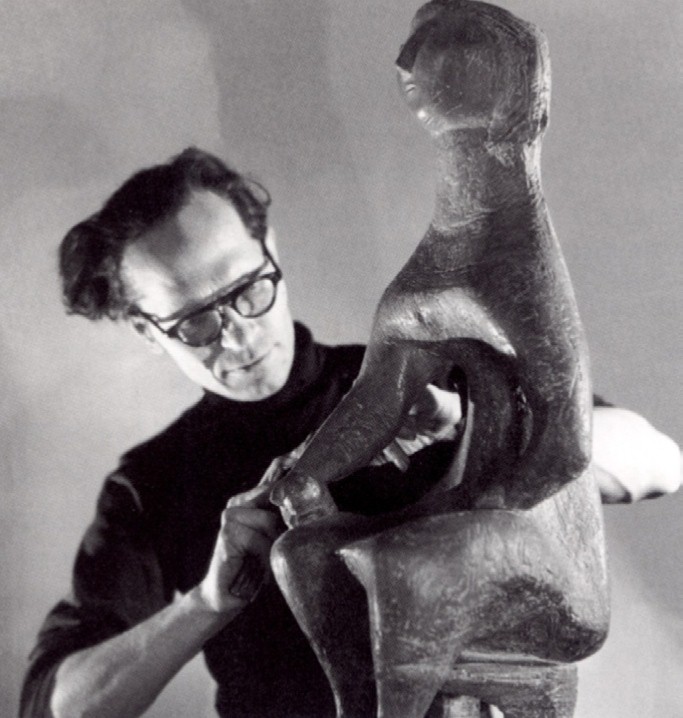Permanent Exhibition of Vytautas Kašuba Works "The Human Mystery"

The exposition entitled The Human Mystery presents the works of famous Lithuanian emigration sculptor Vytautas Kašuba (1915–1997).
V. Kašuba was born in 1915. After some training at Juozas Zikaras’ studio, V. Kašuba was admitted to the second year course at the School of Arts in Kaunas. The extraordinary skills of V. Kašuba quickly became obvious. During the preparation for the 1937 Paris World’s Fair, he helped sculptor Juozas Mikėnas and artist Jonas Prapuolenis to create their works. Vytautas Kašuba being a second-year student himself won silver and gold medals for wood carvings in the fair. Soon he was asked to create the figure of Vytautas the Great for the Lithuanian exposition at the 1939 New York World’s Fair.
V. Kašuba graduated from the School of Arts in Kaunas in 1939. Due to the approaching front line, V. Kašuba and his future wife, Aleksandra Fledžinskaite, fled to the West in 1944. After spending some time in Germany, the Kašuba family emigrated to New York, the USA.
From 1953 to 1969, V. Kašuba created approximately 30 religious works, round and relief sculptures, Stations of the Cross in churches and convents in Chicago, Boston, New York, Washington and many other places in the USA.
After being asked to decorate the Vatican Pavilion at 1964 New York World’s Fair, V. Kašuba made a very original decision to create relief panels of Saint Scriptures. He used the hammered lead (repoussé), a technique employed in the Middle Ages, but unknown in America.
The most important works of this period are the monumental relief panels: the bright major tonality is felt in Day by Day (1984–1988), the bronze wall Journey (1984) and a diptych of cast stone panels, The Journey of Existence (Spaces of Fate and Foreign Shores, 1984–1987). The diptych The Journey of Existence can be called the apex of sculptor’s creativity. This work represents the drama of human life, develops the idea of the journey which creates a connection between the individual and the eternity.
V. Kašuba visited Lithuania for the first time after the World War in 1974. After the return to America, he created a set of medallions with the great dukes of Lithuania and some medals. V. Kašuba gradually decided to give his works to the homeland as a gift. The first collection of sculptures and reliefs was sent to the Lithuanian National Museum of Art in 1987. In 1992, the sculptor won the sculpture contest to build the monument for Gediminas, the Lithuanian Great Duke. The monument was opened in Vilnius in 1996, a year before the death of V. Kašuba (1997).
After the death of a sculptor, his wife Aleksandra Kašubienė, who was an artist as well, sent more of his works to Lithuania. Now the Lithuanian National Museum of Art keeps more than 240 sculptures, lead, bronze, cast stone, plaster reliefs, approximately 20 medals and 200 drawings.
The works of Vytautas Kašuba are well known and appreciated in Lithuania. They are, too, kept in museums, public and private collections, churches and convents in the USA, Canada, Japan, and Lithuania. The presbytery of the Church of Resurrection in Kaunas was decorated with the high relief created by Vytautas Kašuba, Crist Risen (1965), in 2012. It is one of the most mature sculptor’s religious works which was transferred from the closed Recollection House of Calvary monks.
33 Liepu st, LT-92145, Klaipėda, Lithuania
+370 46 410 412
domsaicio.galerija@lndm.lt













